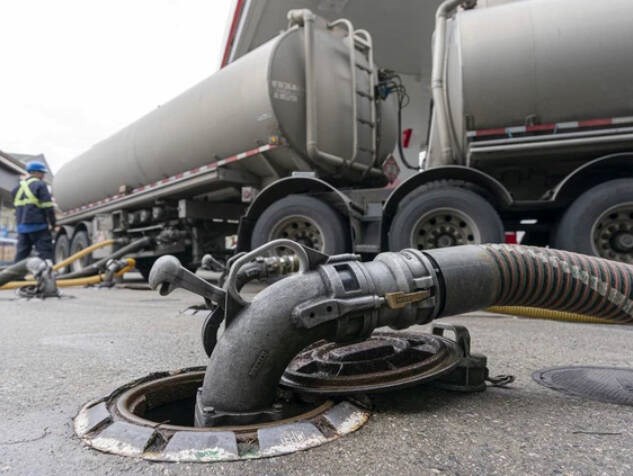Calgary-based Parkland Corp.’s Burnaby refinery is now in “standby mode,” so that it can resume processing quickly once new shipments of crude arrive via the pipeline or rail.
“Parkland maintains some crude-oil storage on-site, so up until today, it has been able to continue operations,” said Kent Fellows, a professor at the University of Calgary’s School of Public Policy
He said there is storage of crude oil as well as gasoline and diesel in the Lower Mainland that can be relied upon in the short run, but he hasn’t been able to find data on how much storage there is or how full it was before the flooding.
Three of the main ways gas is supplied to the Lower Mainland and elsewhere in sa国际传媒 were disrupted by the flooding.
“Trans Mountain would also normally be shipping about 27,000 barrels per day of gasoline and diesel from refineries near Edmonton to the Lower Mainland in sa国际传媒,” said Fellows.
U.S. imports are still running, but they usually only account for 12 per cent of the total gas supply, an estimate Fellows based on his analysis of information from a recent sa国际传媒 Utilities Commission report. It’s a much smaller base amount even as there are reports of barges with gasoline heading to sa国际传媒 from the U.S.
While Parkland normally supplies about 33 per cent of the gas to the Lower Mainland and the Island, refineries in Edmonton, shipping via Trans Mountain, usually supply about 32 per cent, and the same refineries, shipping via rail, supply about 23 per cent, said Fellows. He explained these are ballpark figures from his peer-reviewed and published research, but the exact data is often proprietary and not public.
“It’s no small piece of infrastructure” that has been impacted, agreed Toronto-based fuel analyst Dan McTeague, who is president of Canadians for Affordable Energy.
McTeague added there are some small fuel terminals in the Burrard Inlet, but their supply wouldn’t be significant enough to have an impact.
He said that, in terms of U.S. imports, it’s important to remember that while there are refineries in Seattle that can be tapped, the pipeline supplies 150,000 barrels of oil every day for three of the big five refineries in the Puget Sound and Anacortes areas of Washington state.
Some of these refineries do have the option of importing crude from elsewhere if it came to that extreme, said Martin King, a senior analyst who looks at Canadian gasoline supply for Houston-based consulting firm RBN Energy, LLC.
Nevertheless, “these are pretty limited pieces of infrastructure that can’t in themselves make up what the Trans Mountain pipeline does, and the longer that pipeline is out, obviously, the more disruptions you are going to create and the more significant the shortages may come to be,” said McTeague.
Trans Mountain said Tuesday afternoon that “if all planning and work continues to progress and no further issues with the pipeline are assessed, [it] is optimistic that we can restart the pipeline, in some capacity, by the end of the week. Key to successful execution of the restart plan will be access for equipment, fair weather and no new findings of concern.”



